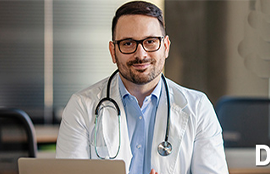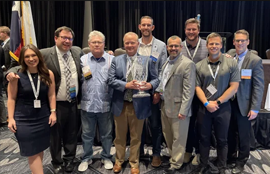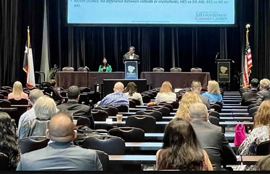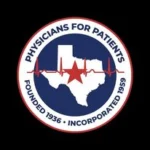TSA President's Acceptance Speech


Thank you.
I am very honored that you chose me to be your President this upcoming year.
In these remarks, my goal is to communicate my overall vision for TSA and the year to come. I do not plan on repeating my President-elect report. For more details about the issues I will discuss, I refer you to the excellent committee reports in the House of Delegates handbook.
Although I will refer you to the many reports in the House of Delegates handbook for details of activities, challenges and the upcoming year, I will highlight several things.
Advocacy is vital. Some of our members shy away from advocacy and say they dislike getting involved in politics. My response to them is “Who should lead in the development and implementation of health policy?” The answer is obvious – Physicians! Otherwise, others will make policies that will control how we practice. So my response to those that look down on advocacy is that instead I ask them to get involved in health policy discussion, development, and implementation. In other words, get them involved with advocacy.
TSA advocacy and health policy are truly a group effort, involving many people and committees, including the Government Affairs Committee, the TSA PAC, the Key Contacts Committee, the Communications Committee, the Economics Committee, the Patient Safety and Medical Quality Committee, and the Education Committee.
We will be communicating more on the issues as the year progresses. For now, I am creating a call to action for the TSA Delegates:
- Go back to your departments and talk with your colleagues about legislative and health policy issues.
- Contribute to the TSA PAC .. and get your colleagues to contribute.
- Look for email blasts throughout the year – we need help in the legislative year to have members contact their representatives.
- Save the date for TSA Capitol Days – February 24-25, 2025– ask for the time off NOW. Because there are so many new legislators and staff this year, we need as much help educating them on the issues.
- Join TMA – they are protecting patient safety and physician led care.
TSA is much more than simply advocacy. This year, you will see a new website unveiled. Our communication committee is in charge of the new website and will work with other committees to make the website more accessible to use, and informative. The committee is also involved with social media presence. Our TSA newsletter and the editorial board must be recognized for creating a fabulous newsletter. The “On the Shoulders of Giants” series is a wonderful and informative series. If you have not read them, you should! I hope we do a better job of informing our members of the articles when they come out. On the educational front, several committees are involved – including the educational committee, resident and medical student education, practice management, and the newly formed TSA Meeting Organizing Committee. The Patient Safety and Medical Quality Committee has reorganized into subcommittees to provide members more opportunities to get involved with TSA. And the TSA does even more.
You don’t have to wait a year if you want to help but are not on a committee or subcommittee. Much of the committee work is done virtually – via emails and Zoom meetings. Email the current committee chair to express your interest and ask to be added to the list serve. If you are interested in being on a subcommittee, contact the committee chair or subcommittee chair. I am happy to appoint more people to subcommittees this year. In other words, get involved this year! And then apply to be on the committee next year. More importantly, if you have colleagues who want to become involved and are unsure how, these steps are a great way to get started. The more our junior colleagues are involved in TSA, the better our society today and in the future. We need to all be looking at developing our future leaders.
TSA is a society of ANESTHESIOLOGISTS – As an organization, we need to make sure we support the individual members. The ASA Statement on the Fundamentals of a Safe and Healthy Workplace compiles existing ASA statements and recommendations on what anesthesiologists should expect in a safe and healthy workplace. We need to create a way for TSA to recognize employers (groups, companies, facilities) who support and have policies consistent with the ASA statement. In this way, if you are trying to decide between two different employment opportunities, and one supports the ASA statement, and one does not, you can make a more informed decision. Peer-to-Peer support is important to combat the second victim syndrome. My hope is at next year’s annual meeting, we can offer a train-the-trainer session to allow you to start your own program at your facility. The workforce shortage is on everyone’s mind, and it can lead to burnout if it is not addressed. One of the ways to address the shortage is to increase the number of anesthesia clinicians in our state. If our CAAs can be licensed, groups can better recruit CAAs from outside Texas and help reduce the shortage. For this reason, CAA licensure is one of TSA’s legislative priorities.
My final ask for you today is to ensure everyone you work with is a TSA member.
Before I finish, I want to make some personal comments. I am honored to be a TSA member and a TSA leader. I have been a member of TSA for over 30 years and have found our society and its members very inclusive. We work together for the betterment of our patients and specialty. We do this despite having different backgrounds, political views, or faiths. We always return to doing what is right for the patient.
I have been supported by many in my career. I want to thank my UTMB family, my TSA colleagues, my parents—Atiya Abouleish and my late father, Dr. Ezzat Abouleish—and my family—my wife, Dr. Lamia Elerian, and my children—Kareem, Ayman, and Sharif—who are in the audience today. Thank you all.
Dr. Abouleish
President 2024-2025
TSA Facebook Feed
🎓 About to Graduate? Just Getting Started? Don’t miss the Transition to Practice Seminar at #TXAnes25! We’ll cover the real-world stuff they don’t always teach in residency like:
💼 Different job types & contracts
💸 Money tips & personal finance
🏥 Navigating hospital politics
🧘♀️ Prioritizing your well-being
📈 Business basics of anesthesia
Whether you're private practice curious, academic bound, or figuring it all out — this session’s for YOU. More information coming at the end of the month once registration opens. tsa.org/
... See MoreSee Less
TSA Instagram Feed
TSA Twitter Feed
🎓 About to Graduate? Just Getting Started? Don’t miss the Transition to Practice Seminar at #TXAnes25! We’ll cover the real-world stuff they don’t always teach in residency like:
💼 Different job types & contracts
💸 Money tips & personal finance
🏥 Navigating hospital…
TSA Member Alerts
TSA provides CME programs; advocates at the legislative, regulatory and legal arenas; and through its representation at the ASA, TMA, and AMA, it insures that TSA’s voice is heard at the state and national levels.
Posted 03/2023
The TSA is a voluntary, non-profit association of over 3,800 members interested in the medical specialty of Anesthesiology and it is a component of the American Society of Anesthesiologists.
Posted 07/2022
The American Society of Anesthesiologists is an educational, research and scientific association of physicians organized to raise standards of the medical practice of anesthesiology and to improve patient care.
Posted 01/2022
The Pediatric CV Anesthesia Fellowship at The University of Texas Health Science Center at Houston is now Texas Medical Board
Posted 01/2021
TSA Upcoming Events

Get your Free Texas Prescription Monitoring Program CME today!






